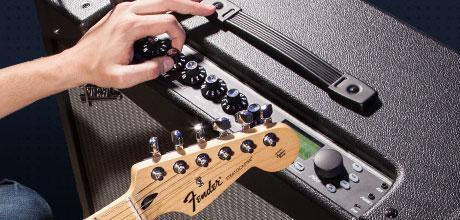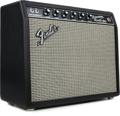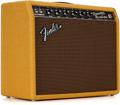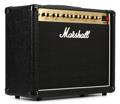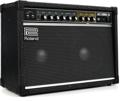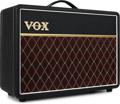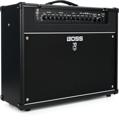How to Choose a Guitar Amp
Sweetwater has the right guitar amplifier to get your musical message out to your audience! This Sweetwater Buying Guide includes information that can help you choose a guitar amp for your needs. Since there’s so much to consider when purchasing an amplifier, don’t hesitate to call (800) 222-4700 for more information.
- Should I get a combo amp or a head and cabinet?
- Which is best, solid state, or tube?
- The benefits of modeling explained
- Speakers: Does size matter?
- Guitar amps for live, studio, and practice
- What to Look For…
Should I get a combo amp or a head and cabinet?
This one is actually pretty simple, as it really depends on just how big a venue you are planning to play in. For club dates and even small halls, today’s combos are well-equipped to deliver the power you need to be heard all the way in the back. If your goal is to have enough sonic firepower to fill a giant auditorium or even an open arena, there’s no question that you’ll want a high-powered stack with at least a 4 x 12″ cabinet and a 100-watt head. As a caveat to that, some players still prefer a smaller amp – such as a Vox AC30 – for its specific tone, and then simply mic the amp and run it into the PA system (provided the PA will handle it, of course). Remember, a combo is an all-in-one unit, a head and cabinet are separate and usually heavier.
Which is best, solid state or tube?
Here the traditional thinking is that solid state circuitry can produce superior clean power at a much more affordable price, while the scarcity of vacuum tube manufacturers today tends to make tube-based amps more expensive than a comparably powered solid-state amplifier. This has led to some interesting hybrids in which the basic tone is produced by a tube-driven preamp, while the power amp is solid state. Still, the majority of “serious” players will almost always lean towards a tube amp, though the attitude is changing as manufacturers turn out amazing new amps that are based on cutting-edge technology. In the end, choosing an amp with the tones you like, whether solid-state or tube, is the most important thing.
The benefits of modeling explained
Modeling amps offer the best of all worlds. You can buy anything from a basic “practice” amp to a high-end, tube-powered combo that will deliver almost any tone or effect you might need or want, and it will pull double-duty as a great studio amp. These modeling amps provide everything from clean rhythm tones to a full-out overdrive along with many “must have” effects like reverb, chorus, phase, flange, and delay.
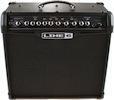
What’s more, modeling frees you from the constraints of having to “make do” with a particular amp’s tonal range. Using sophisticated DSP, a 2 x 12″ modeling amp can sound like a vintage 1 x 10″ tweed or a modern 4 x 12″ stack. When you add up all the benefits of a modeling amp, they do make a lot of sense unless you just happen to be a purist who is convinced that only a 1959 Fender Bassman reissue will sound like a 1959 Bassman. For those players, modeling is simply no substitute. And since a player’s individual tone is critical, we concede that each guitarist will decide for themselves whether modeling is for them or not.
Speakers: Does size matter?
Different size speakers produce different sounds. Smaller speakers can produce higher frequencies than larger speakers, which is why a tweeter is small and a woofer is large. So in the real world, a 10″ speaker will generally produce a better “top end” than a 15″ speaker. There is also a difference between an open-backed cabinet and a closed-cabinet design. Which is why certain amps, like a 4 x 10″ Bassman with an open back will sound different than a 2 x 12″ Bassman with a closed cabinet. And even though speakers may be the same size, they can still have different sound characteristics.
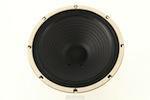
Many blues players swear by those old open-backed 4 x 10″ Fender amps, as they can produce a range of tones from smooth to searing. If you want a big rock sound, you’ll likely want to plug your guitar into a 100-watt head with one, or two, 4 x 12″ cabinets. One well-known guitarist preferred four 4 x 12″ cabinets, which may explain his current hearing problems. Today manufacturers can custom tweak their amps by combining a certain size cabinet with a certain size set of speakers.
Guitar amps for live, studio, and practice
This topic has become less significant with the advent of the modern modeling amp, as these can serve as a practice amp, studio amp, and live amp. There are also interesting modeling modules for studio applications, like the Line 6 POD series. These provide an amazing array of amp models, as well as terrific digital effects thanks to sophisticated DSP processing.
Naturally, the ideal situation is to have one setup specifically for studio work or at-home use and another for those gigs that take place in larger venues. Like all areas of music technology, you have a surprising amount of bang-for-the-buck today, with the exception of boutique amps and vintage reissues that still command premium prices. Fortunately, Sweetwater carries amps from your basic beginner’s amp all the way up to those drool-worthy Fender, Vox, and Marshall reissues.
What to look for…
Now that you’ve selected your dream guitar, we need to find an amp to go with it. There are numerous options depending on size, sound, amplifier technology, and configuration. Below, you’ll find a friendly guide to steer you through the maze.
Types Of Amplifiers
There are four types of guitar amplifiers: solid state (analog), tube, modeling (digital), and hybrids.
Solid-state amps
These amps are called solid-state because they use transistors for their preamp and power sections They are very reliable and seldom need repairs. They often have a very clean tone, although many come with a “distortion” also. These amps are popular with players looking for a sturdy, reliable touring amp. Most lower cost “practice” amps are solid state.
Tube amps
Tube amps preferred by many guitarists for their warm, fat tone and “organic” distortion. Tube amps usually sound louder than solid-state amps of the same wattage and have a definite “feel” that you don’t get from solid-state amps. Most tube amps have separate channels that can switch from clean to distorted tones instantly. Tube performance can deteriorate over time, so tubes need changing occasionally.
Modeling amps
Modeling amps use digital processors to simulate the sound of old-fashioned tube technology. Using software that “models” the sound of tube amplifiers (and cabinets), these amps put the sound of numerous amps in one box. Modeling amps are programmable, and often have built-in digital effects such as delay, chorus, etc. Some include digital or analog outputs with speaker simulation for going direct into a recording interface or PA system.
Hybrid amps
Combining the best of each type of amp into one package, these amps use an actual tube in conjunction with the solid state power section of their amps. Many hybrid amps use a tube in the preamp section and solid state circuitry in the power section to create a tube tone without requiring the use of power tubes.
Configurations
In addition to types of amplification, amps come in different configurations. Combos (short for combinations) are self-contained units containing the amplifier and speaker in one cabinet. Amps also come in separate head and speaker cabinets. These allow you to use any amp head with virtually any speaker cabinet. They also break the amp into two units, making each unit lighter and easier to carry than a single combo. Combining two cabinets and a head is called a “stack.”
Construction
The thickness of wood used to construct the cabinet is a major factor in determining the quality of sound. The thinner the wood used, the more likely the speaker will vibrate itself loose. A thickness of at least 1/2” will achieve a strong sound and keep the speaker in place. Another factor determining sound quality is whether the amp has an open or closed back. Closed-back guitar amps produce a better bass response from the speaker.
When moving an amp from gig to gig, it’s quite common for them to get banged up a bit. Good corner protectors will add to the life of the guitar amp.
Power and Speaker Size
The power rating and size of speaker you choose for your amp will depend to some degree on application and price. Practice amps are usually solid state or modeling combo units featuring low power (10-30 watts) and small (8″ or 10″) speakers, although there are some small tube amps to be found. For rehearsal and playing smaller venues, consider tube and modeling combo amps with power ratings averaging about 50 watts and 12″ speakers for fuller sound. For larger venues or for performing loud, expect power to average at 100 watts and up. You can use “twins,” or combo amps that have pairs of 12″ speakers, but this is where a separate head and speaker cabinets (a “stack”) are most effective.
Other Options
Other additional features you might encounter include:
Reverb units
Some amps use spring reverbs, which can be very natural sounding, while others use digital reverb.
Effects loops
These jacks allow you to add stomp boxes or rack units after the preamp section of the amp to avoid amplifying any effect noise.
Channel switching
These amps allow you to switch between different preamp channels usually going from a clean tone to a distorted one. Check to see if a footswitch is included. Digital amps often require the purchase of an additional multi-function footswitch to change tones remotely.
Built-in effects
Many amps are famous for their built-in effects. Tremolo is another effect many amps feature (great for surf guitar.) Modeling amps usually contain multiple built-in digital effects.


